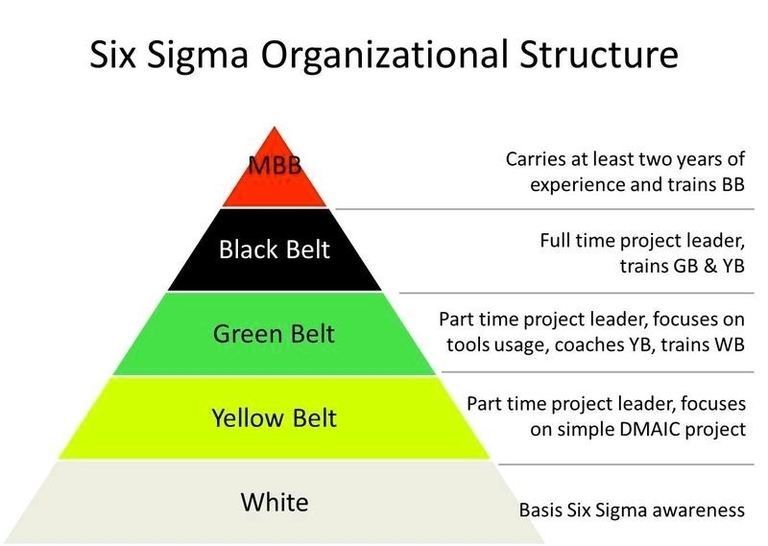
Lean Six Sigma is a methodology that combines the principles of Lean and Six Sigma to improve quality and efficiency in processes and products. Lean Six Sigma practitioners gain expertise by earning belts for each level of achievement. These levels are:
– White Belt: An introductory level of knowledge to the fundamental concepts of Lean Six Sigma. White Belts can work on local problem-solving teams that support overall projects, but may not be part of a Six Sigma project team.
– Yellow Belt: A basic level of understanding of how Lean Six Sigma works, what it is, and how the disciplines can be applied to the workplace. Yellow Belts participate as project team members and review process improvements that support the project.
– Green Belt: An intermediate level of proficiency in data collection, analysis, and problem-solving for quality improvement projects. Green Belts lead and manage projects, while providing support to Black Belts.
– Black Belt: An advanced level of expertise in Lean Six Sigma philosophies and principles. Black Belts are known as agents of change within an organization who lead project teams and train and coach other belts.
– Master Black Belt: The highest level of achievement in Lean Six Sigma. Master Black Belts have extensive experience and are leaders in their fields. They develop key metrics and the strategic direction for the Lean Six Sigma program and act as internal consultants and mentors.
Lean Six Sigma certification can help you advance your career and earn more money. According to the IASSC, average salaries at each level are:
– White Belt: $42,000
– Yellow Belt: $65,000
– Green Belt: $85,000
– Black Belt: $95,000$110,000
– Master Black Belt: $100,00 $135,000
